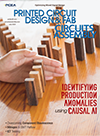Features Articles

The controversial technology could help cut the carbon footprint of daily living.
We know the pandemic has forced many to work from home (WFH) and as a result driven up demand for products like PCs and home IT equipment. There has also been a large reduction in commuting to and from workplaces, which many have enjoyed and vowed to continue even after lockdowns are lifted.
These changes ought to benefit the planet by reducing greenhouse gas emissions and other pollution. We should consider the impact of the extra demands placed on data infrastructures to handle this upsurge in remote working, however. It takes energy to move all that data back and forth, although arguably this would happen whether workers are at the office or at home.
Data center businesses have blossomed during the pandemic, with an uptick in demand for their services. These include work-related services as well as home entertainment. Netflix has reported record consumption, although the rise has flattened recently, perhaps as content has become exhausted.
To continue reading, please log in or register using the link in the upper right corner of the page.

It’s time to consider more in-person visits.
Are we in the post-Covid world yet? That simple question will ignite both outrage and debate in many parts of the world. Yet in other places people are ripping off their masks and starting to resume normal life. This disconnect has significant implications for electronics manufacturing services (EMS) companies and their marketing strategies. It also has implications for people not wishing to transition from temporary work-at-home settings.
I live in Texas, and our governor has made mask mandates illegal, so I have had a preview of the psychological changes that hit when people who have been masking up and hunkering down for over a year suddenly don’t have to do that anymore. I’m fully vaccinated and am choosing not to wear a mask. Once the mask mandate was lifted, stores switched to encouraging those not vaccinated to continue to wear masks, but that choice is left to patrons. The first week I went shopping without a mask, I was in the minority. Three weeks later, the aisles are full of maskless people. Even store employees are ripping off their masks. In short, attitudes on masking shift quickly once unmasking starts and case numbers continue to drop.
To continue reading, please log in or register using the link in the upper right corner of the page.

The trend toward keeping ideas under wraps may slow adoption.
Early in my career cutting-edge technology was personified in hardware, such as a wire EDM machine for cutting metal used in dies for wire-to-wire terminals: for instance, forks, rings and spades. No one in those days associated software with technology. It was simply some magic the IT department created to generate reports.
Decades later, most people immediately think of software, firmware and apps as technology, while the devices themselves, regardless of how advanced, are more or less just hosts for the apps. In our industry, there is far more recognition of the technology that goes into hardware and an appreciation that the two are codependent to provide the desired end-application. In fact, many in our industry may well believe the real magic is in hardware that can withstand a variety of operating environments, while providing a stable and robust platform for software to operate.
Today, in some ways, technology is wearing two faces: one that enables and one that confounds!
To continue reading, please log in or register using the link in the upper right corner of the page.

If the market is big enough, sooner or later Google will join it.
That much was laid bare in late June when the search giant cum OEM announced its latest venture, Visual Inspection AI, a new “purpose-built solution” designed to help businesses, including manufacturers, reduce defects and cut operational costs.
Now before you start doubting Google’s temerity to dive into technology that cuts across almost every industry imaginable, remember we’ve been here before.
While the company today still counts on its hugely successful targeted search marketing program for the bulk of its revenue and profits, several other businesses it has launched have made serious inroads in their respective markets. These include broadband; telecommunications; autonomous vehicles; and human health gambits (marketed under the Verily Life Sciences name). Acquisitions brought it Nest Labs, the maker of smart thermostats. Less front and center, but just as integral, are Google’s vast data centers, also known as server farms, which power its reach into just about every precipice known to man.
To continue reading, please log in or register using the link in the upper right corner of the page.

Getting all the parts and processes aimed in the same direction.
Printed circuit board technology never sleeps. At this very moment, engineering teams are working out ways to increase circuit density with finer-pitch devices. When it comes to placing these components on a PCB, the margin of error shrinks along with the pin pitch. Let’s look at how we can enable these parts on the assembly line.
The first step in mass production of a PCB assembly is preparing the board to take components. The boards may be baked in an oven prior to starting the assembly process. Although they are packed in sealed containers with a little bag of desiccant, the sponge-like dielectric materials still absorb water one molecule at a time. Prebaking releases the steam that could interfere with reflow soldering.
Ideally, all parts on a board will use the same type of technology and will be roughly the same class of components in terms of pin-pitch and other physical aspects (FIGURE 1). Tall and heavy components plus small and light ones are not a good mix. Tall ones create so-called shadows where the surrounding area doesn’t get as hot during soldering.
To continue reading, please log in or register using the link in the upper right corner of the page.

Soldering excursions can lead to visual process indicators.
This month we look at cracks in plated through-holes around the knee of the hole. FIGURE 1 shows very small via holes that were subjected to multiple lead-free soldering steps, then underwent thermal cycling with no failures but a little cracking.
The cracks visible in the microsection were found on via holes not after the initial two reflow steps and wave-soldering test boards, but after further temperature cycling at -55o +125oC. No electrical failures were detected, just the impact of repeated stressing of the copper. It is a good demonstration of how reliable a board can be, but all that stress does have some visual impact. Care must be taken during microsection preparation to see these indicators.
To continue reading, please log in or register using the link in the upper right corner of the page.
Press Releases
- Naprotek Appoints James Eisenhaure as Chief Financial Officer
- Naprotek Appoints James Eisenhaure as Chief Financial Officer
- ViTrox Announces Strategic Partnership with Maxim SMT to Strengthen Presence in India
- Incap UK achieves JOSCAR Zero accreditation – Strengthens its position in the defence and aerospace sector


